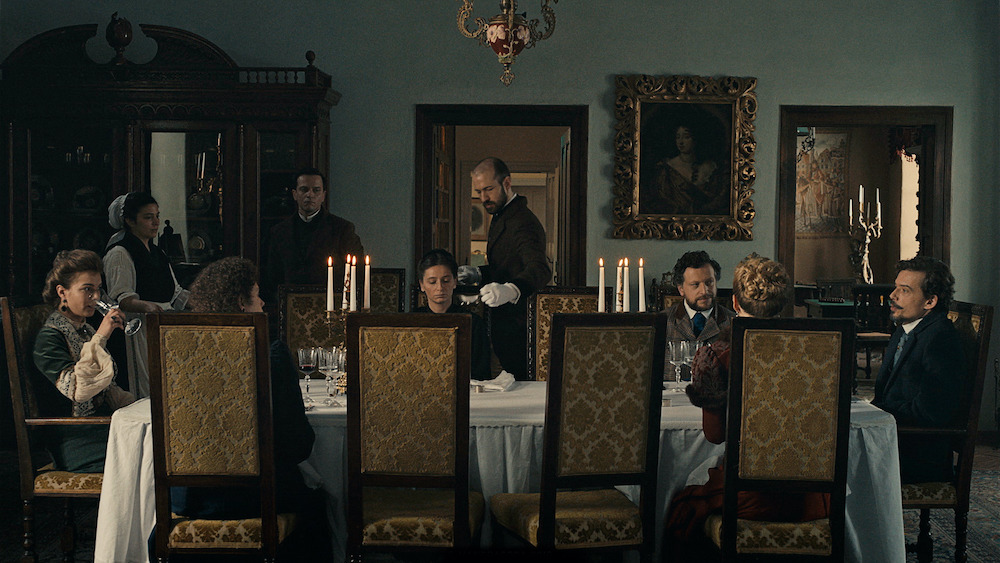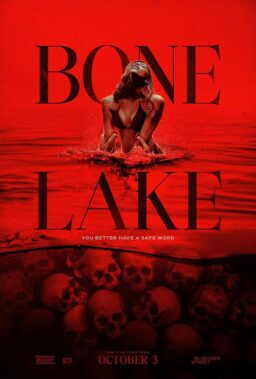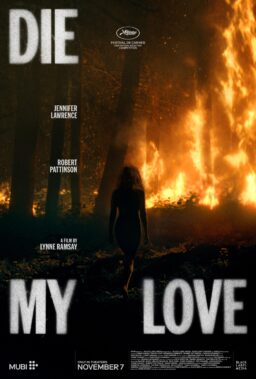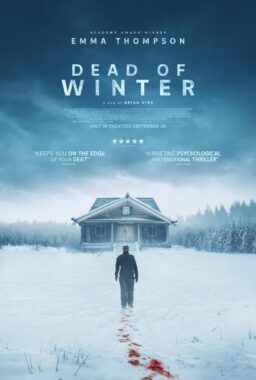For 40 autumns before the Year That Cinema Screeched to a Halt, each September offered a singular geographic and aesthetic itinerary: as the air began to bear a bracing chill, I would join other critics in hurrying to Lincoln Center for New York Film Festival press screenings. These events, as I’ve noted before, dependably produced what struck me as the cinema year’s richest lode: made up of roughly 30 titles from around the world, the festival’s Main Slate often yielded half of my annual ten-best list.
There’ve now been only two interruptions to the happy anticipation surrounding the festival’s arrival. In 2001, a year that had seemed to promise a Kubrickian millennium, the destruction of the World Trade Center cast clouds that were at once literal, emotional and metaphorical. But the festival did go on. In 2020, a number that hinted at “perfect vision,” the curse of a global pandemic has meant that there was no excited rush to Lincoln Center, no greetings of familiar colleagues, no theaters filled with the press; the screenings occur in online solitude only. But again, the festival is going on—mainly via virtual public screenings, supplemented by a few shows at drive-ins in the outer boroughs.
In 2020, the NYFF was already in a period of transition, thanks to the departure last year of festival director Kent Jones (who served for five years following the 25-years-each stints of his predecessors, Richard Roud and Richard Peña). The festival got a new director, Film at Lincoln Center mainstay Eugene Hernandez, and there was a shuffling in the selection committee even as it seemed that the decision-making center of gravity in selections would shift to FLC director of programming Dennis Lim. Unfortunately, the new regime’s decision that excited the most comment in the New York film community was its shuttering (temporary or permanent?) of Film Comment, the venerable journal that was also the FLC’s and festival’s best advertisement.
Then came the pandemic. For any festival held in the second half of the year, 2020 is bound to be counted an off-year for one reason above all: producers of many films considered among the year’s most artistically promising are withholding them until theatrical exhibition returns. Many of those films will presumably debut at Cannes in 2021—which should be a banner year, assuming the festival resumes then —but their non-appearance at the canceled Cannes 2020 left many festivals, including New York’s, with far fewer top-shelf options than usual.
Given that reality, I wondered if the festival’s programmers might venture a radically innovative selection process by seeking out new talent and sources of films beyond established festivals and institutional suppliers. But it was not be. This year’s Main Slate contains an array of the usual suspects, both in terms of auteurs and sources. Which is not to say that it’s a bad selection, merely one that, primarily due to the lack of Cannes laureates and discoveries, feels a tad undernourished. Speaking of sources, the three films considered here debuted at festivals that took place before the pandemic hit: two at Berlin and one at Sundance.
New York, like most kindred festivals, has a strong, longstanding auteurist bent, and I certainly consider Romania’s Cristi Puiu a major auteur, having named his “The Death of Mr. Lazarescu” (2005) the best film of this century’s first decade. But his career since then has been rather anomalous. While “Mr. Lazarescu”—a three-hour medical odyssey that seemed like an improbable conjunction of Franz Kafka and Robert Altman—won awards at festivals around the world and gave him a foothold in the U.S. arthouse market, the subsequent “Aurora” (2010) and “Sierranevada” (2016) gained spots in the NYFF and a certain amount of critical approbation, but were also eccentric enough to avoid the support of U.S. distributors.

“Malmkrog,” Puiu’s latest, takes that eccentricity even further. Honoring the Romanian tradition of extended running times, it devotes its three and a half hours to a series of ornate philosophical discussions among five aristocratic characters, three women and two men, who are spending the Christmas holidays at the plush Transylvania country estate of one of the men in the waning days of 1900. The only other characters are servants, who do their work in fastidious silence. The conversations begin before lunch and last until after dinner. The main five are all dressed to the nines, in proper Victorian finery, and one striking thing about their talk is that it is all in formal French.
Such aristos inhabit a society, a world, that will soon be swept away by the new century’s wars and revolutions, and we can’t help but interpret their words with that in mind, much as we do the world conjured in Renoir’s “Rules of the Game.” But those words are, in many respects, bafflingly dense and opaque as to their larger meanings. While the oldest woman is devotee of Prussian-style militarism, the other four are more preoccupied with the problems of Good and Evil in the world, and interpretations of Christianity that seem to pit Russian Orthodoxy against Roman Catholicism and a kind of modern free thinking that flirts with resurrected ancient heresies like Gnosticism.
The film in some ways reminded me of Thomas Mann’s The Magic Mountain, but that work has the advantage of being a novel, allowing the reader to absorb its arguments at his or her own pace. “Malmkrog” perhaps sounds like a play put on film, but Puiu’s elegant staging, very precise compositions and gorgeously nuanced cinematography give it a persuasive cinematic appeal. Yet dramatically it offers very little. Though there are moments that suggest an undercurrent of sexual competitiveness, the conversations and the characters’ interactions are mostly intellectual, with arguments that in some cases prove quite abstruse.
What are we to make of all this? One conclusion that seems unavoidable is that Puiu, the success of “Mr. Lazarescu” notwithstanding, simply isn’t interested in engaging international audiences, at least beyond the rarefied precincts of festivals. Watching “Malmkrog,” I kept wondering what a Romanian audience would make of it. Is it in some ways a meditation on the underpinnings of modern Romanian identity, with elements of Russian feudalism and Prussian militarism vying against the more progressive currents of post-Enlightenment Europe (the fact that everyone speaks French is highly resonant)? If the filmmaker is only addressing his countrymen, that’s his choice, and perhaps an admirable one. But it effectively guarantees that Americans will never see “Malmkrog” in their local arthouses.

Taiwan’s Tsai Ming-liang graduated from the Berlin festival ahead of Puiu, his “Days” gaining U.S. distribution as well an NYFF slot. Along with Hou Hsiao-hsien and the late Edward Yang, Tsai remains part of the triumvirate of auteurs most associated with the New Taiwanese Cinema. After his older counterparts launched the movement in the 1980s, he sprang onto the scene in the ‘90s with a trio of films—“Rebels of the Neon God” (1992), “Vive L’Amour” (1994) and “The River” (1997)—which still strike me as one of the most remarkable triple plays in cinema history. All starred actor Lee Kang-sheng, Tsai’s muse and perennial leading man, and followed attractive young characters on peripatetic odysseys through modern Taipei.
Tsai’s great themes are loneliness and alienation, but these films explored them with such visual inventiveness, understated wit and youthful energy that the mood they communicated conveyed as much exhilaration as anomie. After leaving the ‘90s, though, Tsai’s work began to seem less spirited and more downcast. “What Time Is It There?” (2001), with its cameo by Nouvelle Vague icon Jean-Pierre Leaud, was the last of his films that I found truly enjoyable and revelatory. Thereafter, in films like “Goodbye, Dragon Inn” (2003) and “Stray Dogs” (2013), it seemed that Tsai’s outlook was growing more morose and self-enclosed.
“Days” has some of those qualities, yet it also conveys a spark of creative renewal. With a visual language as spare as in any of his previous films, Tsai starts out by simply observing Lee—now in his 50s, no longer the sleek youth of yore—gazing out a window at the rain. Running around five minutes with no action or dialogue, this initial scene sets up a kind of meditative stance and rhythm that continues in subsequent scenes as Lee moves around his apartment, doing his daily chores, slicing vegetables for his meal, etc.
The scene shifts when he goes for a treatment on his neck, which apparently refers to a real ailment suffered by the actor that was previously referenced in “The River.” In any case, when the scene shifts again, we are longer with Lee but with a young Laotian man in his apartment as he gives himself a bath. We are never told anything about this character, but he’s a certain type of sex worker who gives Lee an erotic massage that occupies a chunk of the film’s second hour.
“Days” announces at its opening that it contains no subtitles. But none are needed as the meaning of the few snippets of dialogue can be easily surmised. Somewhat to my surprise, I found this latest example of Tsai’s minimalism not only appropriate but pleasing. In interviews, the director indicated that he found in this film a way of working that required minimal budget and crew, and thus allowed him greater creative freedom. The film itself has the feeling of being made from that liberated mindset.
But I must say that the current state of the world surely had something to do with my liking of “Days.” If Tsai is a poet of solitude and its discontents, this is the right moment for him. Though filmed and premiered before the pandemic, his latest captures its cloistered mood perfectly.

As a gay man, Tsai was able to stage the 20-minute erotic massage in his film in a way that feels as natural as it does accurate and authentic to the characters. Contrast that to the awkward inauthenticity of “I Carry You with Me.” When I first heard of the Sundance prize winner, it was described as a “Mexican gay film.” Too bad it’s not. Mexico produces some outstanding gay films, and my hope for innovative programming at the 2020 NYFF included the possibility that it might seek out work from the likes of prize-winning Mexican gay auteur Julian Hernandez.
Instead, we get “I Carry You with Me,” a film about Mexican gay men directed by a white Michigan native named Heidi Ewing. Ewing has previously made documentaries, including “Jesus Camp,” and her latest reportedly started out as a doc about a Mexican couple who have lived for decades in New York as successful restauranteurs. In some of the film we see the two men, Ivan and Gerardo, now middle-aged, playing themselves in doc-style footage of their present-day lives. But most of “I Carry You with Me,” is given over to their youthful lives (here they’re played by actors) in Puebla, Mexico, where their fresh romance is tested by the fact that closeted Ivan wants to make an illegal move to the U.S. while openly gay is Gerardo is afraid to make the leap.
Thanks to cinematographer Juan Pablo Ramirez, the film has a pleasing, realistic look, but the script Ewing wrote with Alan Page Arriaga plays like a compendium of cliches aimed at ticking off boxes on a Sundance checklist of politically acceptable attitudes about everything from patriarchy and homophobia to immigration and racism. This kind of fashionable veneer may make the film an arthouse success when it’s released by Sony Pictures Classics, but it hardly equates with real artistic worth. And the biggest lacks here are at the drama’s center due to the film’s soft-edged view of the relationship of young Ivan and Gerardo, including a lack of erotic heat between the actors playing them. Instead of actual physical connection and passion, including sex, the filmmakers seem to think gay romance is mainly a matter of guys casting goo-goo looks at each other.
Am I arguing the filmmakers shouldn’t cross borders of culture or gender in approaching their work? Not at all. In the best film of recent editions of NYFF, “The Rider,” Chinese-born director Chloe Zhao provided a vision of Native American rodeo riders in South Dakota that’s as culturally rich and incisive as it cinematically accomplished. Filmmakers should feel comfortable crossing such borders in their work, if it’s founded on real artistic vision rather than facile, Sundance-style attitudinizing.












